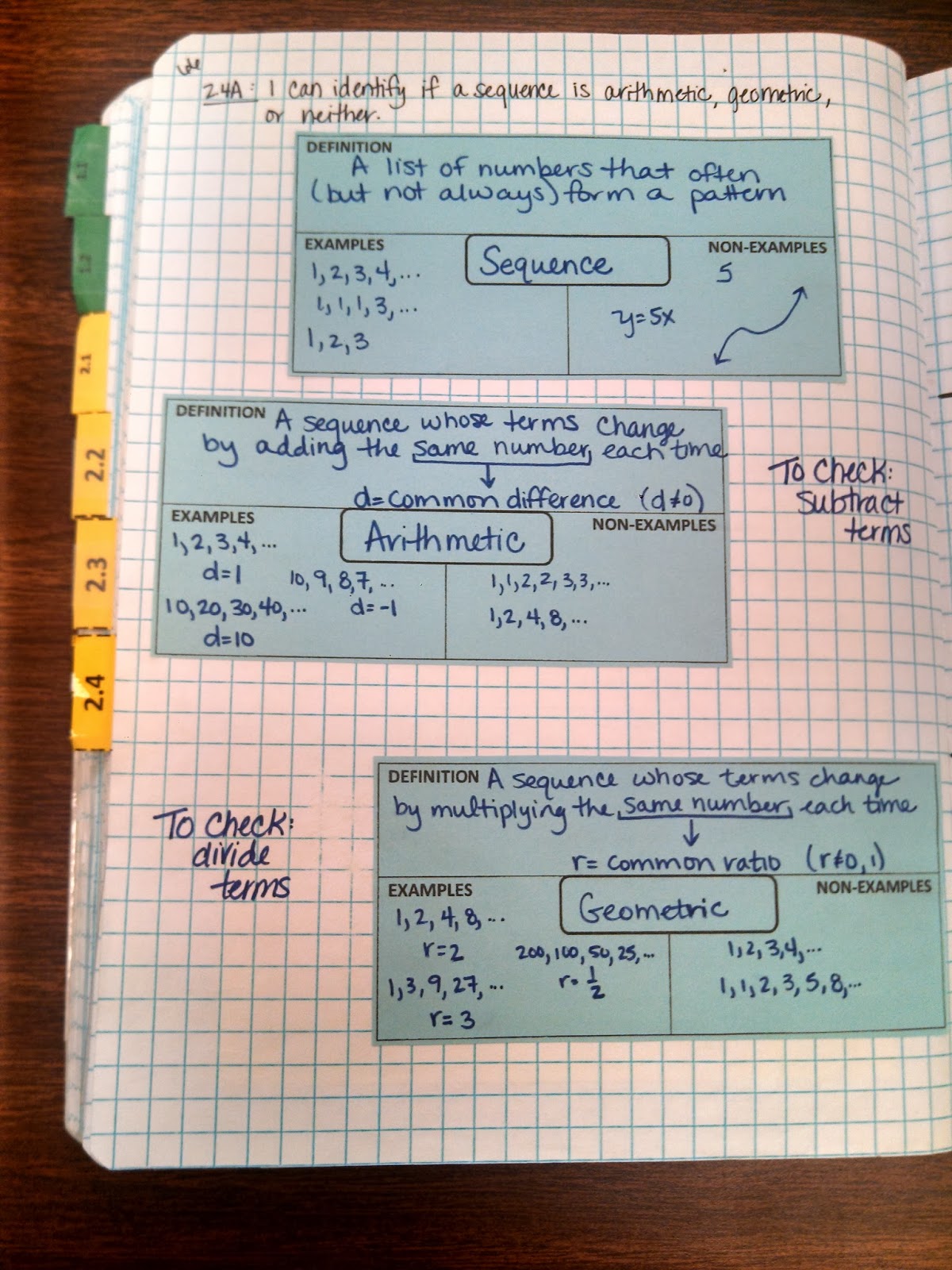Before we even do anything officially sequence related, I usually give my students four sequences (one adding, one subtracting, one multiplying, and one dividing). I give the first four terms and ask them to find the pattern, the starting point, and the next three terms. This gives them a little time to transition to new material that appears easy.
This time we tried a table of contents. (Which I got from Sarah at math=love. You can find it here.) I liked it a lot because I used it to makes students think (just a little) about what was on each page.
 |
| Table of Contents |
 |
| Definitions |
 |
| Sort these |
Next we discussed writing formulas for the sequences. Since I had asked about starting point and pattern as we went, I thought recursive was a natural follow. Instead of using all the nasty notation (a_n, a_1, etc.), I talked with my area education association and someone recommended this now = /next = notation.
Note: I liked it a lot, but students wanted to just put the "now" in for the "now" in the second equation so that there would only be one equation. I think it might have been better to use start = /next = now/. That might help.
To practice I displayed a bunch of sequences and asked students to write the recursive formula for 8 of the 12.
 |
| Practice Problems to be displayed |
 |
| My notebook had the answers :) |
Next we looked at writing formulas explicitly. I tied this into the equations for linear and exponential functions. We did a mini-breakdown of the equations in class and came up with:
- Arithmetic: a = d*n + start
- Geometric: a = start*r^n
Those would be very familiar to them and still used a little bit of "sequence notation".
 |
| Notes on explicit formulas |
We practiced writing explicit formulas the same way we did recursive (even with the same exact sequences).
 |
| My notebook :) |
My last learning target for this unit is "I can explain why a sequence is a function." It is perhaps a not-so-great learning target because it is somewhat difficult to teach and assess in a way that requires student thinking and learning. However, it is very closely aligned to a standard (F.IF.3...?) and I struggle with the battle between whether I should be assessing standards or learning targets. Anyway those thoughts are best left for a different post.
Here is what we did. It was an investigation of sorts, where students were to choose a sequence and determine if the table that represented it was a function and if the graph that represented it was a function. However we had difficulties because my students didn't do super well with determining if something is a function.
The goal was that students would choose a wide-variety of functions and we could whiteboard individual results, do a gallery walk, and come to the conclusion that all sequences were functions. However it didn't go down quite like that. I perhaps needed another day of class, but it was crunch time for semester tests, so I didn't have any wiggle room.
I ended up having a class discussion, but not assessing that standard. It is what it is I suppose.
 |
| Sequence = Function (p.1) |
 |
| Sequence = Function (p. 2) |
- I wish I had done more vocabulary up front (ie. term, first term, second term, common difference, common ratio). It is hard for me to remember what words are new to students.
- Also a graphic organizer to show the relationship between sequence, arithmetic, and geometric.
- As I said, with recursive formula, I would change the first equation from now = ___ to start = ___.
- I've really been thinking about how I need to spiral some review in for students. (More on this later...probably not until this summer.) I believe this would have helped as we looked at sequences as functions.
Please leave any thoughts or suggestions in the comments, or tweet me (@kathrynfreed).
-Kathryn

